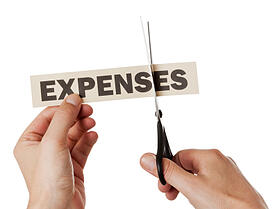Cost cutting has always been a indispensable tool for businesses during a recession. However, many cut-down programs merely lead to temporary results: the company may gain its targeted cost reduction, but rarely will they gain sustainable growth. There are 3 cost cutting mistakes you need to avoid so your business can grow again when the recession passes.

1. Enterprise considers cutting cost a long term solution
In any case, a cutting down program is a simple and short term method to create competitive advantage and short term methods rarely work when the company really tries to improve or consolidate their product, which is the real long term method. The motive of cost cutting programs is austerity during recession, or part of business restructure after recession. The recession doesn’t last forever, when it’s over, continuing cutting down will no longer gain further profits. In fact, it starts to do damage.
Read more: Why keeping a tight control of SG&A expenses may backfire

2. Managers cannot distinguish good expenses from bad expenses
When it comes to expense management, the most common challenge is to distinguish the ‘good expense’ (make profit) and the ‘bad expense’ (needs cutting). If the ‘precious stuff’ is accidentally thrown away in the effort of cutting cost, the resulting appearance is to go against what is desired.
How to distinguish a good expense from a bad one?
Base on ‘added value making processes’, good expense is expense that brings back added value for the enterprise, the cost or expense that plays an important role in making profit. For example, the expense which a restaurant makes for investment in food quality so that their customer can enjoy more is a good one.
On the contrary, bad expense is cost that can be cut down without decreasing competitive advantage. They are usually system errors or bad decisions. For example, due to the carelessness of employees, the sample is printed before acceptance of the customer is reached. The customer certainly refuses to accept them and demands another print. That resulting cost is a bad expense.
If enterprise mistakes expenses, even after a successful cost cutting program, finally, what the company has to deal with is now the difficulty originating from cutting costs.
Read more: Top 10 Reasons Why Companies Should Automate Expense Management
3. There is no priority in expenses
There are certain expenses that needs prioritizing. According to the 80:20 rule that says 80% of profits come from 20% of strategic goods, a small decrease of these expenses creates a value big enough for the company to earn profit already. We need to analyse the expense structure from which each expense’s proportion can be acknowledged. Those that have big proportions are a priority. For example, in aquaculture, material costs a lot, counting for more than 80% in total, hence, a priority.
In general, only when the company has effectively engaged an expense management plan with the cost cutting plan will the plan be lucrative. An effective expense management solution minimizes the need of constantly establishing new plans on a large scale.

Subscribe to our Blog now to have similar articles sent to your inbox!
 English
English  Vietnamese
Vietnamese 



